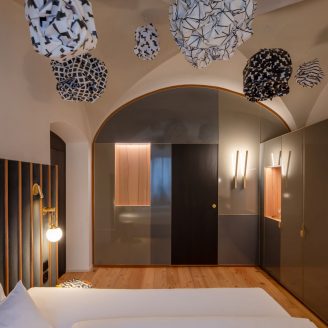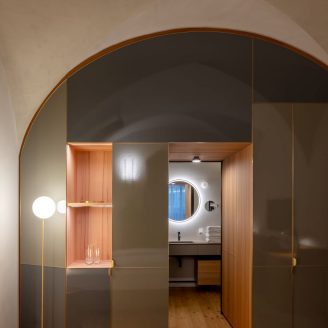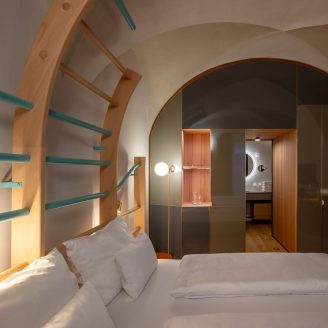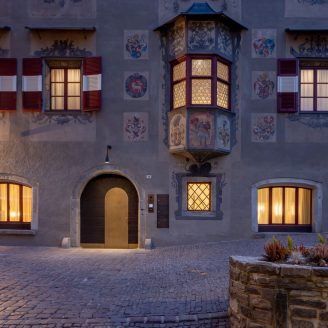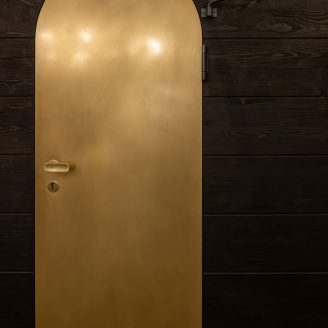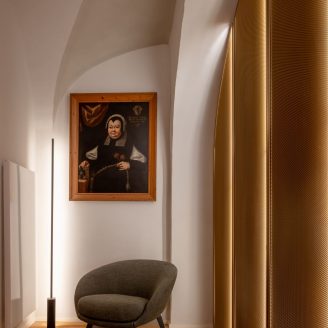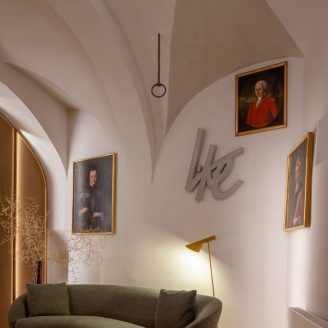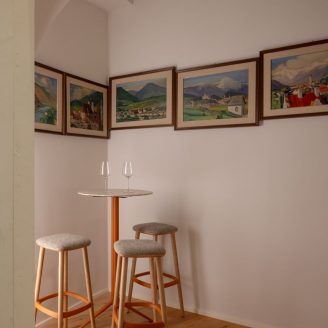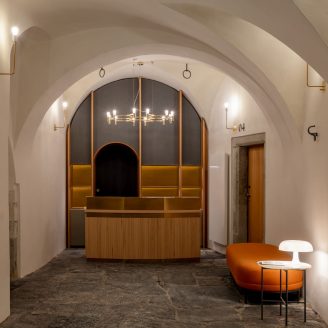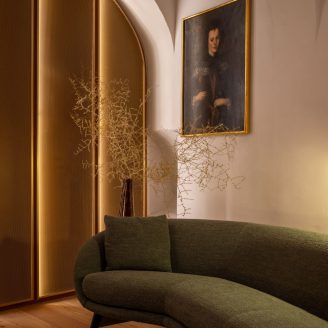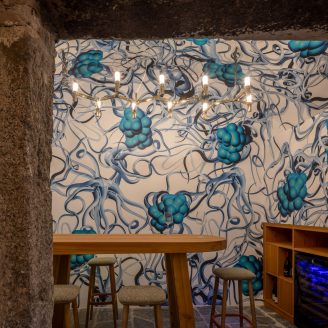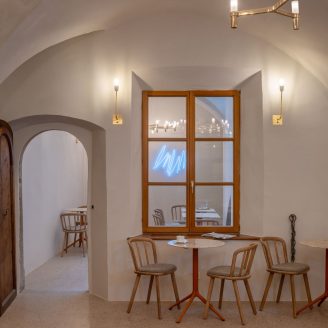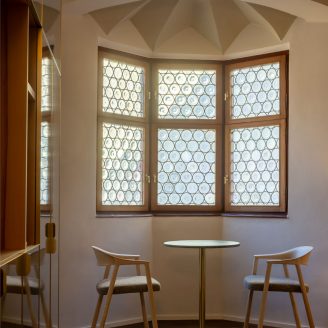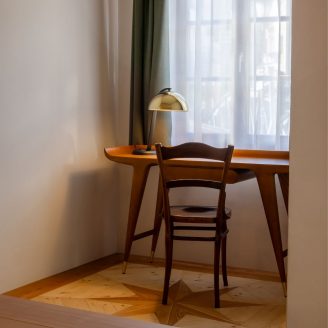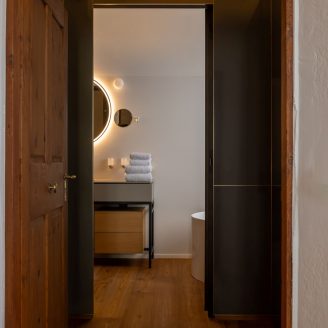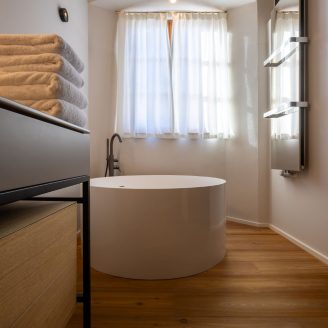In Brixen, South Tyrol, Vudafieri-Saverino Partners restored Lasserhaus, an aristrocratic residence dating back to the 15th century, and transformed it into a contemporary Art Hotel.
Commissioned by the Faller family, owners of this old building for around 40 years, the architects have divided up the interiors, transforming the first two floors into a 4-star superior Art Hotel and allocating the last two as the family’s private home.
The hotel has ten bedrooms: three suites, six doubles and a single with a cosy sophisticated mood. Inside the rooms and the common areas, the Faller family’s collection of classical paintings meets works by contemporary artists, turning the space into an interesting new attraction for the collective.
The concept
For the architectural restoration and interior design of Lasserhaus, a building fully listed by the Superintendency for Archaeology, Fine Arts and Landscape, the architects focused on the dialogue between history and contemporaneity.
The project reflects the peculiarities of the episcopal city of Brixen, which blend a medieval tradition and atmosphere with avantgarde cultural offerings. The interiors of Lasserhaus – located on the banks of the Isarco River and connected by a bridge to the old town – are in fact enriched by the works of five artists who confronted themselves with the past of this residence, leaving with their works of art a narrative legacy in the different spaces of the hotel.
The rooms
One the ground floor, the lobby and reception form a space full of memories, characterised by soft lighting and decorated with family works of art and heirlooms. This leads to the first four bedrooms and a small lounge with a library corner for guests to use, as well as a wine cellar with small tasting room, interpreted by one of the pioneers of digital art, the Austrian Peter Kogler, who has used psychedelic patterns to create unusual spatial depths to be explored one by one. Walking up the internal staircase to the mezzanine floor, where the architects have created a spa with sauna and jacuzzi, visitors immediately encounter the work of Alexander Wierer, focused on the incessant progression of time and the transience of the present. The first floor houses the breakfast room and the other five bedrooms.
While their historical features are still visible, the rooms have been given a new look thanks to a combination of natural materials, such as larch and beech wood and brass, which warms and embellishes the details, and soft tactile surfaces such as velvet. They also feature a play of material textures that lend three-dimensionality to the soft furnishings. Some of the furniture has been salvaged, such as the restored chairs typical of the Tyrolean tradition, but most of the pieces have been made to the architects’ design: the wardrobes and partition panels, velvet bedheads with brushed larch sticks and desks, and the panelling behind the beds in minimal elegant strips of wood.
A careful study of colour has resulted in a palette inspired by the colours of the autumn woods and mountains: from the green of shiny laminate to the brown tones declined in the red of the brushed larch, or the warmer darker burnt larch. Artistic incursions can also be found in some of the rooms, such as Ingrid Hora’s ‘Wall Bars’, a large work that offers guests new perspectives and encourages them to give free rein to their ideas; or ‘Thoughts and Planets’, an installation by the renowned artist Esther Stocker: ten sculptures that seem to float on the ceiling vault and dissolve fixed points thanks to broken geometries.
Where the lighting was concerned, Vudafieri-Saverino Partners wanted to create a cosy atmosphere with soft diffuse light from floor and wall lamps. In the communal areas, suspension lamps have been chosen instead, such as the striking chandelier in the breakfast room, where ‘Expect the best’, a work by visual artist Petra Polli, also hangs.
The art collection
Two curators are responsible for the Lasserhaus art project: Stefanie Prieth, for the contemporary art works, and Rose Bourdon, for the family collection. These artistic interventions are only the start of cultural activity that will branch out on several levels, from artist residencies to collaboration with other cultural institutions and the systematic growth of an art collection.
Central to the contemporary art curatorial project was the concept of connection and openness: considering art itself as an instrument of relationship, with their works the artists have transformed the interiors of the Art Hotel into places of dialogue and exchange. The contemporary artworks inside Lasserhaus thus become an integral part of the environment: a subliminal and unobtrusive cultural presence, an “everyday occurrence that is part of a whole”, explains the curator.


